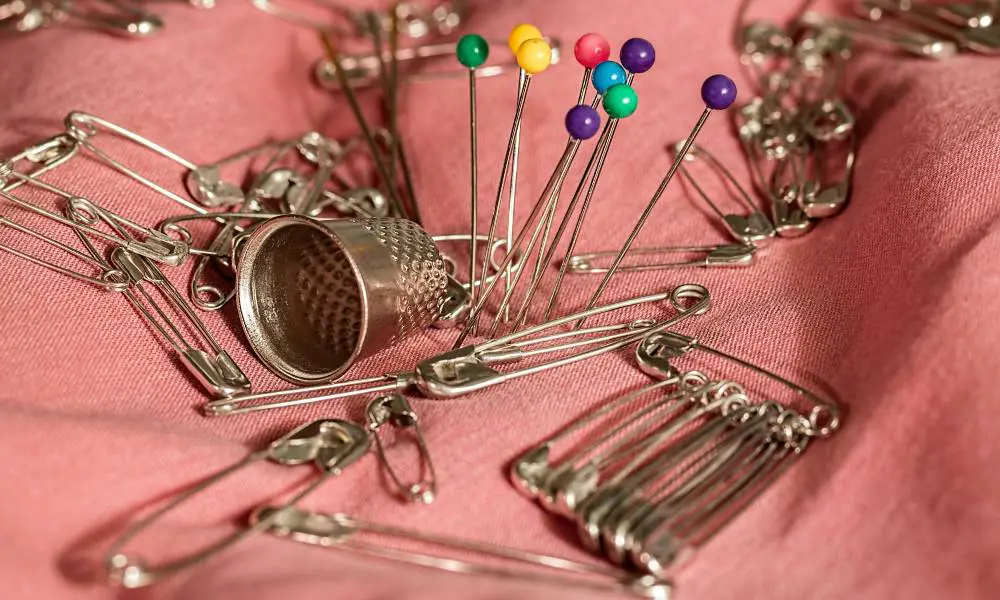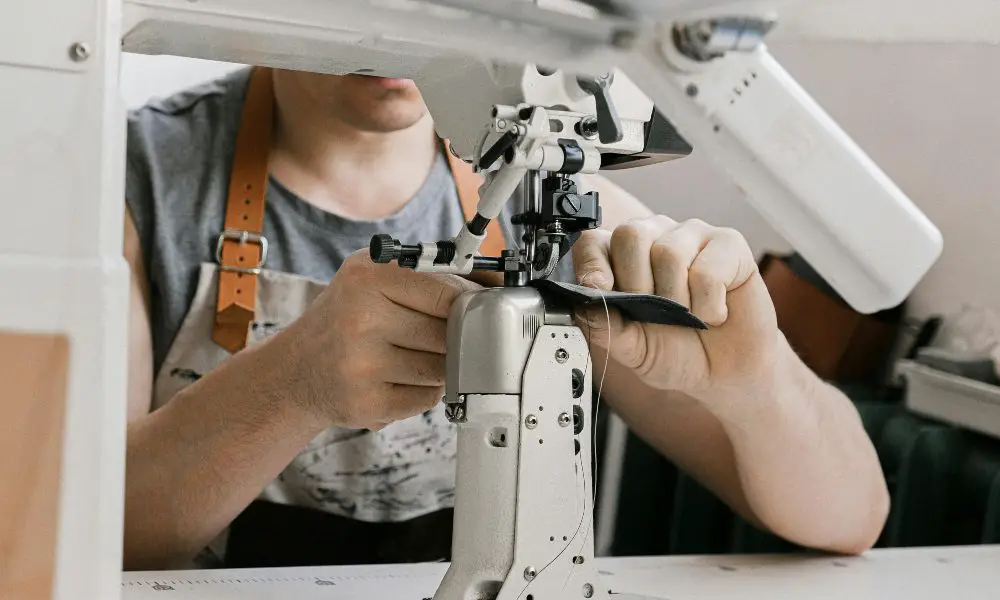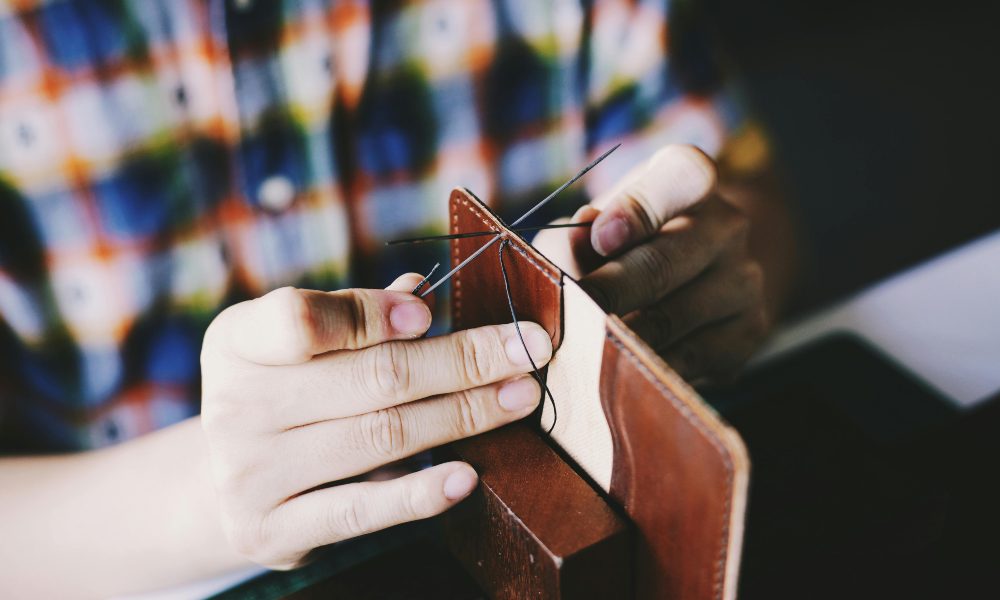Sewing leather and leather-like materials is satisfying but can also be challenging. Leather’s thickness and slippery surface require special considerations to avoid skipped stitches, messy seams, and damaged needles. Sewing most faux leather using a regular home sewing machine with the proper techniques and preparation is possible.
What is Considered Leather?
Animal hides that have undergone tanning and treatment to become a sturdy, pliable material are collectively known as “leather.” Leather is classified into two primary categories:
- Genuine leather comes from animal rawhides like cow, deer, pig, sheep, goat, and kangaroo. Genuine leather varies significantly in thickness and flexibility. Thin, soft leather can feel and sew like fabric. Thick leathers over 2mm are rigid and difficult to manipulate.
- Faux leather refers to synthetic leather-like materials. Faux leather from PU and PVC can feel and look like genuine leather. However, faux leather is more straightforward to sew since it has an even thickness and more uniform texture. Other vegan-friendly leather alternatives made from cork, waxed cotton, and recycled materials are growing popular.
Beyond natural and faux, leather is also graded by thickness. Upholstery grade leather ranges from 3-5oz thick and is relatively rigid. Garment leather for clothing is typically 2-3oz. Accessory leather for bags and small goods is less than 2oz. Knowing your leather thickness helps determine the needles, threads, and techniques needed.
Challenges of Sewing Leather on a Regular Machine
Leather’s durable, dense structure presents some unique challenges:
- Thick, inflexible leather requires extra force. Pushing stiff leather layers through the machine takes muscle. Too much force can strain the motor, break needles, or warp seams.
- Leather can cause skipped stitches. The presser foot easily glides over the leather’s slick surface, so stitches only sometimes form properly. Skipped stitches look unprofessional and weaken seams.
- Leather dulls regular machine needles quickly. Hitting dense leather repeatedly dulls standard machine needles. Dull needles make sloppy stitching and can damage the leather.
- Proper threads and needles are essential. Heavyweight threads and sharp leather needles are required to penetrate leather without excessive needle deflection.
However, a few modifications and best practices can successfully overcome these hurdles to sewing leather.
Tips for Sewing Leather on a Regular Machine
Use a Leather Needle
Leather projects require a specialized leather needle with a razor-sharp point to pierce the material without excessive needle deflection. Choose a leather needle size that matches the thickness of the leather:
- For lightweight garment leather under 3oz, use size 12-16 needles
- Medium 3-5oz leathers need size 16-18 sharp points
- Extra stiff upholstery grade leather may require a size 18-19 needle
Change the needle after every project or immediately if it becomes dull, bent, or buried.
Adjust the Presser Foot
The right presser foot can help with leather sewing. A Teflon presser foot with a non-stick coating helps prevent leather from sticking. A walking foot feeds the leather evenly with the feed dogs to prevent shifting layers. Covering an all-purpose foot in painter’s tape also reduces friction.
Go Slowly
Rushing through thick seams puts undue stress on the leather, machine, and stitches. Sew carefully at a slow, consistent pace to ensure even stitch formation. Slow down further over multiple layers and corners. Let the machine work at its own pace without forcing the leather.
Use Clips and Pins

Clips and pins keep leather layers from slipping while sewing. Leather clips, which look like tiny binder clips, grip leather better than standard pins. Place clips closely together to prevent the leather from flagging or shifting. Remove clips and pins carefully to avoid poking holes.
Slightly Lengthen the Stitch
Adjust the stitch length to 2.5-3mm when sewing leather. The extra length allows the needle to penetrate the thick material fully without straining. But don’t use an excessively long stitch since that weakens the seam strength. Backstitch at the start and end.
Use Polyester or Nylon Thread
Cotton thread snaps easily on the leather’s coarse edges. Hardy polyester or nylon threads stand up to the friction. For added strength, consider waxed threads or doubling up lighter-weight threads on thicker leathers. Always match thread weight to needle and leather thickness.
Best Practices for Sewing Leather
- For straight seams, use a linear or saddle stitch. Set the stitch length slightly longer than usual.
- Leave ample seam allowances over 1⁄2″ for reinforcement and finishing. Grade and clip curves.
- Apply seam sealant or leather glue within seam allowances to strengthen them before turning and topstitching.
- Backstitch at least 1⁄4″ at the start and end of seams to lock stitches in place. Avoid backstitching in visible areas.
- For better control, sew with the leather grain, not against it. Use a 1.5-2mm stitch width and slow, even pressure.
What Projects Can You Do with Leather?
With some leather needles and thread on hand, you can sew many leather items, both large and small. Here are some rewarding leather projects for a regular machine:
- Bags – Totes, handbags, backpacks, messenger bags, wallets, and cosmetic cases
- Apparel – Jackets, coats, pants, skirts, gloves, and accessories
- Footwear – Shoes, sandals, and boots. Just assemble the uppers, not the soles.
- Home goods – Pillows, poufs, pet beds, chair cushions, and headboards
- Accessories – Belts, leashes, guitar straps, saddle bags, and luggage tags
Start with a manageable flat project like a leather clutch or zip pouch. Work up to garments, rounding corners with an edge beveled before sewing. Perfect your technique on mockups before cutting into fine leather.
FAQs
What thickness of leather can I sew?
Most domestic machines can sew garment leathers that weigh less than 3 ounces. Heavier upholstery leathers over 3oz may require an industrial machine. Faux leathers are typically easier to sew than genuine leather.
What needles work best for sewing leather?
Use sharp leather needles in sizes 12-18 based on the leather thickness. Change needles often to keep the tip razor strong.
What threads should I use?
Polyester or nylon threads are best for leather’s coarse texture. Avoid cotton threads, which can shred and break. Consider waxed threads on thicker leathers.
How do I prevent skipped stitches?
Use a Teflon presser foot, walking foot, or tape on the foot to prevent sticking. Go very slowly, and keep the layers straight.
What’s the best stitch length?
Lengthen the stitch slightly to 2.5-3mm so the needle can penetrate fully. Stay away, or seams may weaken.
Should I use glue on the seams?
Applying seam sealant or leather glue within the seam allowances adds strength when turned and topstitched.
What basic projects can I make with leather?
Bags, wallets, accessories, apparel, shoes, pet items, and small upholstery are great beginner leather projects for a home sewing machine.
Conclusion
Sewing real and faux leather on a regular home sewing machine can be done successfully, although it may require specific tools and techniques. Go slowly, invest in quality needles and presser feet, adjust stitch length, and use appropriate threads. You can create beautiful leather goods and apparel to enjoy for years with practice and patience.
What leather item will you sew first?
***
Main image: pexels.com


